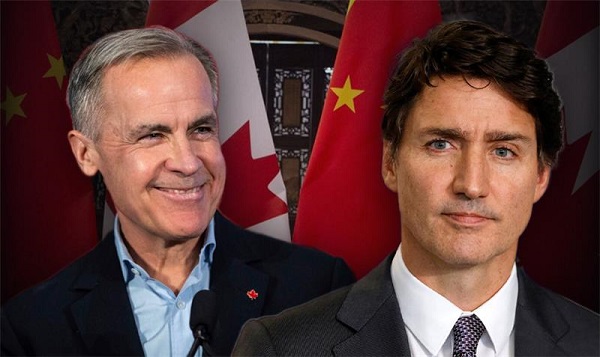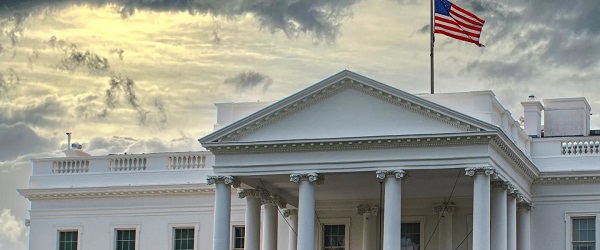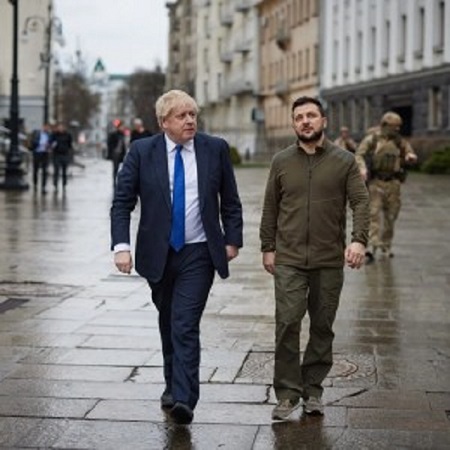Uncategorized
Heir’s big birthday: 70 candles lined up for Prince Charles

LONDON — Prince Charles turns 70 Wednesday and is still heir to the throne — a role he has served since he was a young child.
He’s not lacking in things to do and shows few signs of slowing down — he is wealthy, extremely active in matters of great importance to him, and preparing to welcome his third grandchild into the world when Meghan, the Duchess of Sussex, gives birth next spring.
His destiny, however, is to be king, a position he will automatically assume with the death of his 92-year-old mother, Queen Elizabeth II.
When that happens, Charles will be bound by the
He’s doing all that while increasingly stepping in for the queen and supervising the Prince’s Trust, an ambitious charity he founded 42 years ago that has helped hundreds of thousands of young Britons.
Is the candle-crowded birthday cake a signal that it’s time for the elegantly greying prince to take it easy? Not on your life, says Charles’ wife, Camilla, the duchess of Cornwall.
“I don’t think he thinks he’s 70,” she wrote in a birthday tribute in The Telegraph Magazine. “I think it’s just a number to him. There’s no way that he will slow down. You must be joking. I keep saying 70 is getting on a bit. It’s not very old but it is old. You have to slow down a bit.”
The royal family is in the midst of a slow, understated transition. The patriarch, 97-year-old Prince Philip, has formally retired from public life, although he makes occasional appearances in support of the queen.
For her part, the queen still maintains a busy schedule, but she no longer makes long haul flights to far flung parts of the 53-nation Commonwealth, and this year she took the unusual step of lobbying the Commonwealth countries to specify that Charles would be the next leader of the group, a position that is not hereditary.
The support for Charles was unanimous, reflecting not only appreciation for the queen’s work over the decades but a belief that Charles has a strong commitment to the Commonwealth.
Charles has also taken a more visible role representing the queen at some important national events, most recently during the Remembrance Day celebrations
But his working trips abroad and his speeches at home generate precious little buzz as the press focuses on younger, more photogenic royals and their cute offspring.
In a way, Charles is sandwiched between generations, caught between his mother, a symbol of dignity and continuity who has reigned since 1952, and his two immensely popular sons, Prince William and Prince Harry, who have along with their wives come to symbolize the future of the world’s best known monarchy.
William and Harry also remind many of their mother, the late Princess Diana, who died in a Paris car crash in 1997 after a messy divorce from Charles that for a time tarnished his standing with the British public.
It is William and Harry — along with their wives Catherine, Duchess of Cambridge and Meghan — who appear on the cover of glossy magazines, not the about-to-be-70 Charles. It is the young royals who are seen as glamorous modernizers with the common touch, while Charles is sometimes perceived as dour, preachy and remote.
Camilla says the public doesn’t understand how “incredibly kind” and funny Charles is, and William and Harry — taking part in a rare BBC interview to mark his father’s birthday — praise the way he has used his undefined position as Prince of Wales to advocate so many important causes, such as environmental protection.
But Harry — who has endeared himself to the British public in part with his impish smile and sunny outlook — urged his dad to cut back a bit on the doom and gloom that often accompanies Charles’ pronouncements.
“I would encourage him to remain optimistic because I think it can be very easy to become despondent and negative,” Harry said. “But hopefully with his children and his grandchildren, and a few more grandchildren to come, he can get energy from the family side and then carry on his leadership role.”
He also had this advice: don’t work so hard, and have dinner earlier.
Gregory Katz, The Associated Press
Uncategorized
Cost of bureaucracy balloons 80 per cent in 10 years: Public Accounts

The cost of the bureaucracy increased by $6 billion last year, according to newly released numbers in Public Accounts disclosures. The Canadian Taxpayers Federation is calling on Prime Minister Mark Carney to immediately shrink the bureaucracy.
“The Public Accounts show the cost of the federal bureaucracy is out of control,” said Franco Terrazzano, CTF Federal Director. “Tinkering around the edges won’t cut it, Carney needs to take urgent action to shrink the bloated federal bureaucracy.”
The federal bureaucracy cost taxpayers $71.4 billion in 2024-25, according to the Public Accounts. The cost of the federal bureaucracy increased by $6 billion, or more than nine per cent, over the last year.
The federal bureaucracy cost taxpayers $39.6 billion in 2015-16, according to the Public Accounts. That means the cost of the federal bureaucracy increased 80 per cent over the last 10 years. The government added 99,000 extra bureaucrats between 2015-16 and 2024-25.
Half of Canadians say federal services have gotten worse since 2016, despite the massive increase in the federal bureaucracy, according to a Leger poll.
Not only has the size of the bureaucracy increased, the cost of consultants, contractors and outsourcing has increased as well. The government spent $23.1 billion on “professional and special services” last year, according to the Public Accounts. That’s an 11 per cent increase over the previous year. The government’s spending on professional and special services more than doubled since 2015-16.
“Taxpayers should not be paying way more for in-house government bureaucrats and way more for outside help,” Terrazzano said. “Mere promises to find minor savings in the federal bureaucracy won’t fix Canada’s finances.
“Taxpayers need Carney to take urgent action and significantly cut the number of bureaucrats now.”
Table: Cost of bureaucracy and professional and special services, Public Accounts
| Year | Bureaucracy | Professional and special services |
|
$71,369,677,000 |
$23,145,218,000 |
|
|
$65,326,643,000 |
$20,771,477,000 |
|
|
$56,467,851,000 |
$18,591,373,000 |
|
|
$60,676,243,000 |
$17,511,078,000 |
|
|
$52,984,272,000 |
$14,720,455,000 |
|
|
$46,349,166,000 |
$13,334,341,000 |
|
|
$46,131,628,000 |
$12,940,395,000 |
|
|
$45,262,821,000 |
$12,950,619,000 |
|
|
$38,909,594,000 |
$11,910,257,000 |
|
|
$39,616,656,000 |
$11,082,974,000 |
Uncategorized
Trump Admin Establishing Council To Make Buildings Beautiful Again


From the Daily Caller News Foundation
By Jason Hopkins
The Trump administration is creating a first-of-its-kind task force aimed at ushering in a new “Golden Age” of beautiful infrastructure across the U.S.
The Department of Transportation (DOT) will announce the establishment of the Beautifying Transportation Infrastructure Council (BTIC) on Thursday, the Daily Caller News Foundation exclusively learned. The BTIC seeks to advise Transportation Secretary Sean Duffy on design and policy ideas for key infrastructure projects, including highways, bridges and transit hubs.
“What happened to our country’s proud tradition of building great, big, beautiful things?” Duffy said in a statement shared with the DCNF. “It’s time the design for America’s latest infrastructure projects reflects our nation’s strength, pride, and promise.”
“We’re engaging the best and brightest minds in architectural design and engineering to make beautiful structures that move you and bring about a new Golden Age of Transportation,” Duffy continued.
Mini scoop – here is the DOT’s rollout of its Beautifying Transportation Infrastructure Council, which will be tasked with making our buildings beautiful again. pic.twitter.com/
9iV2xSxdJM — Jason Hopkins (@jasonhopkinsdc) October 23, 2025
The DOT is encouraging nominations of the country’s best architects, urban planners, artists and others to serve on the council, according to the department. While ensuring that efficiency and safety remain a top priority, the BTIC will provide guidance on projects that “enhance” public areas and develop aesthetic performance metrics.
The new council aligns with an executive order signed by President Donald Trump in August 2025 regarding infrastructure. The “Making Federal Architecture Beautiful Again” order calls for federal public buildings in the country to “respect regional architectural heritage” and aims to prevent federal construction projects from using modernist and brutalist architecture styles, instead returning to a classical style.
“The Founders, in line with great societies before them, attached great importance to Federal civic architecture,” Trump’s order stated. “They wanted America’s public buildings to inspire the American people and encourage civic virtue.”
“President George Washington and Secretary of State Thomas Jefferson consciously modeled the most important buildings in Washington, D.C., on the classical architecture of ancient Athens and Rome,” the order continued. “Because of their proven ability to meet these requirements, classical and traditional architecture are preferred modes of architectural design.”
The DOT invested millions in major infrastructure projects since Trump’s return to the White House. Duffy announced in August a $43 million transformation initiative of the New York Penn Station in New York City and in September unveiledmajor progress in the rehabilitation and modernization of Washington Union Station in Washington, D.C.
The BTIC will comprise up to 11 members who will serve two-year terms, with the chance to be reappointed, according to the DOT. The task force will meet biannually. The deadline for nominations will end Nov. 21.
-

 National2 days ago
National2 days agoAlleged Liberal vote-buying scandal lays bare election vulnerabilities Canada refuses to fix
-

 Addictions2 days ago
Addictions2 days agoThe Death We Manage, the Life We Forget
-

 Alberta1 day ago
Alberta1 day agoNet Zero goal is a fundamental flaw in the Ottawa-Alberta MOU
-

 Crime2 days ago
Crime2 days agoVancouver police seize fentanyl and grenade launcher in opioid-overdose crisis zone
-

 Food1 day ago
Food1 day agoCanada Still Serves Up Food Dyes The FDA Has Banned
-

 Daily Caller2 days ago
Daily Caller2 days agoJohn Kerry Lurches Back Onto Global Stage For One Final Gasp
-

 National1 day ago
National1 day agoEco-radical Canadian Cabinet minister resigns after oil deal approved
-

 Addictions1 day ago
Addictions1 day agoManitoba Is Doubling Down On A Failed Drug Policy










